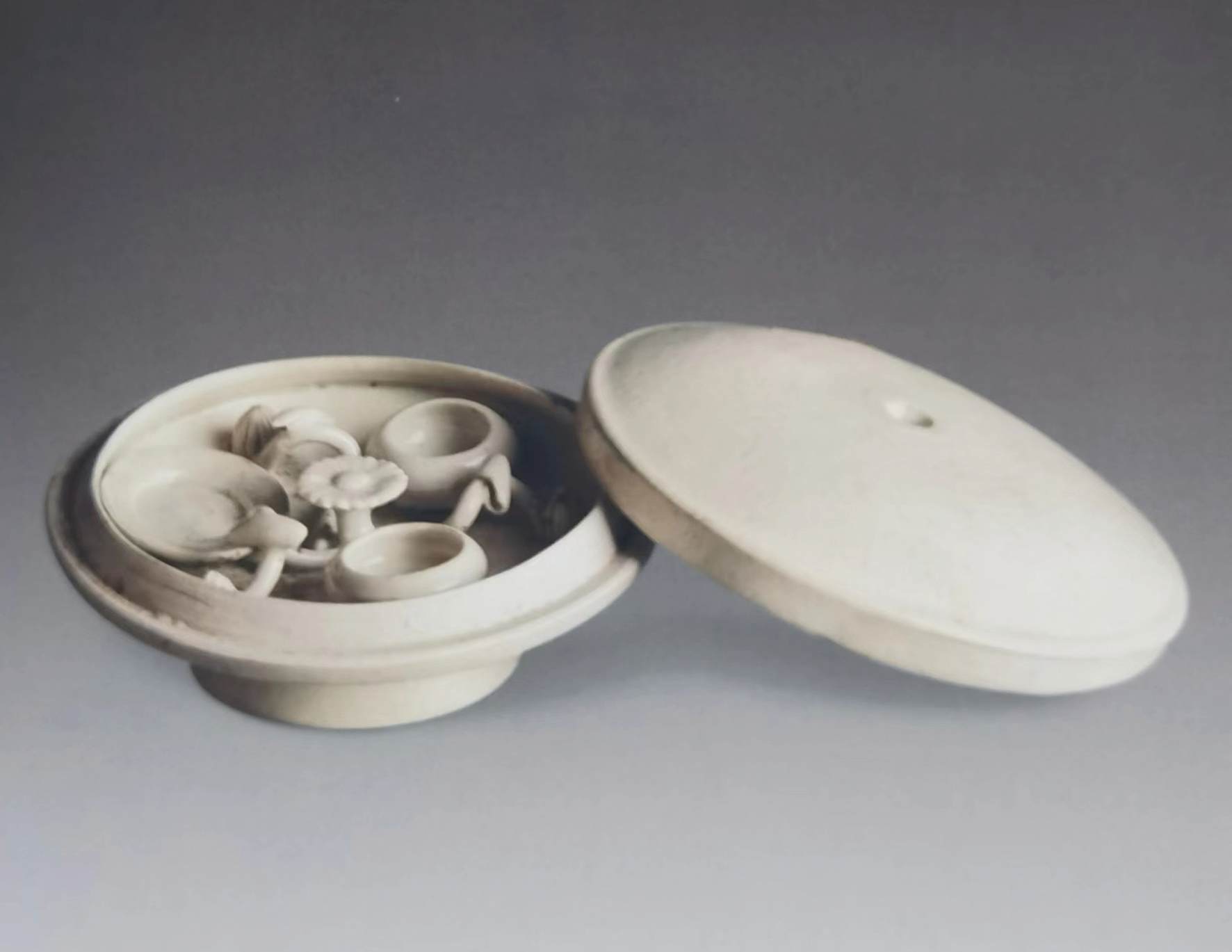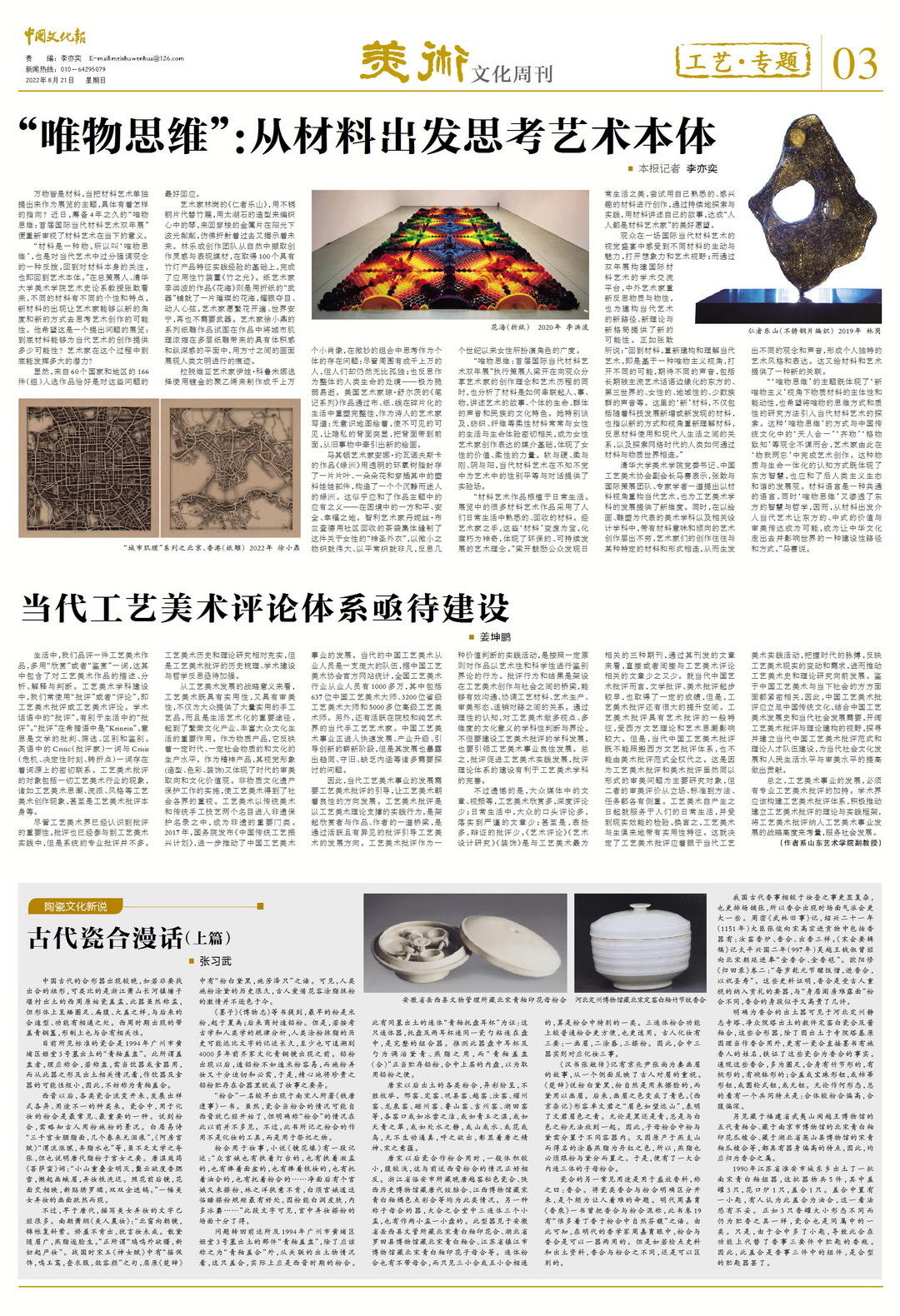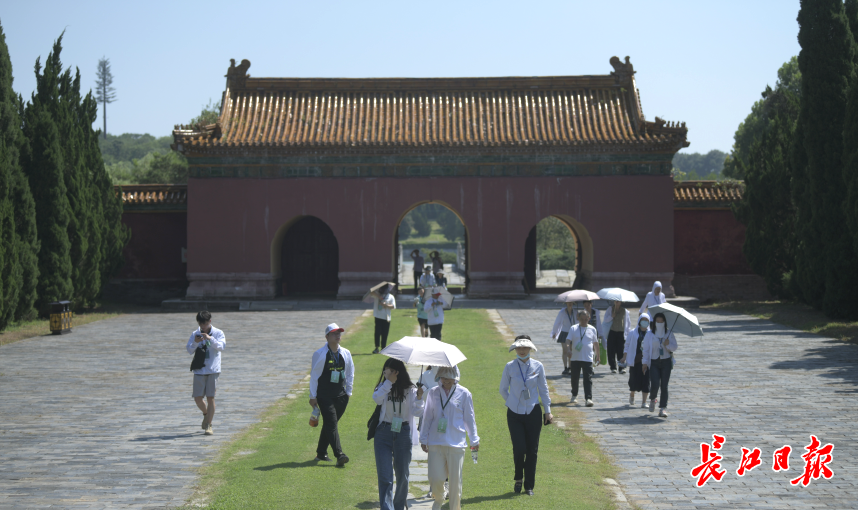Ancient porcelain combined (Part 1)
Author:Cultural Tourism China Time:2022.08.21
Ancient Chinese co -shaped fractures appeared late. If it was not to find out the ancestor shape, the comparison was the original porcelain cover unearthed from Tangziyan Village, Changhe Town, Xiaoshan, Zhejiang. The short -circle feet, flat abdomen, and large cover are similar to the later combination and functions. In the Western Zhou Dynasty, a bronze cricket appeared in the Western Zhou Dynasty, and it was related to the shape.
The standard porcelain is currently seen in the "Green Glaze Capital Cup" unearthed from the tomb of No. 3 Jitang, Huangpu District, Guangzhou in 1994. Those who cover the cup should be combined. If they are called cups, they need to be used as a drink or a food device. From the shape of this device and unearthed related situations, the possibility of drinking device and food utensils is very small. Therefore Glaze cover.
After the Western Jin Dynasty, the combination of various types of porcelain changed, developing different types of style and different uses. In the porcelain, the powder for makeup is the most common and important one. When it comes to fans, we need to know the situation of the ancients with powder. Bai Juyi's "Three Thousand Palace Girl Rouge Noodles, a few spring without tears", "Afang Palace Fu" "Weiliu is greasy, abandoned water water", etc. Although there is no lack of exaggeration of literature, it also shows that the Tang Dynasty fat powder was in the palace girl's essentials. Essence Tang Wenting's "Bodhisattva Barbar" word: "The mountains overlap the golden destroyer, the clouds want to spend the snow, lazy to draw the moth eyebrows, make makeup and wash late. Cover. "The picture of a beautiful woman made her makeup.
However, as early as the Tang Dynasty, there were a lot of text describing beauty makeup. Xiao Gang's "Beauty Morning Makeup" in the Southern Dynasty: "The north window is towards the mirror, and the tent is obliquely lingering. If you want to make your new woman strictly makeup. " In the Warring States Period, Song Yu's "Goddess Fu" had the phrase "shaking, beautiful, Mingyu, clothes, and clothes, and converging her face." Qu Yuan's "Chu Ci" has the words "Pink White Dai Black, Shi Fangze". It can be seen that the history of mankind has a long history, and the passion of the ancients who love the flowers and apply fat is not inferior to today.
Books such as "Mozi" and "Museum" mentioned that the earliest powder was rice noodles, which started in Xia Yu; later Shang Ye created lead powder. However, according to the laws of archeology and anthropology, the history of human coating powder may be far longer than the description of text, and at least it can be traced back to more than 4,000 years ago before the appearance of Qijia cultural bronze mirrors. After the appearance of lead powder, lead powder is not as easy to make rice noodles, and it is very urgent and necessary for applying makeup. Therefore, carefully storage in the precious lead powder in the equipment has become a key task for makeup.
"Fanhe" appeared in the book "Qian Tang Religion" earlier in the Southern Song Dynasty. Although the situation of porcelain and pink may have begun since West Jin, it is clear that the situation of "Fanhe" was rare before. However, the role of the powder recorded in this book is not a tool for makeup, but for sacrifice.
Fans are used for makeup. There is a description of the novel "Mirror Flower": "The Gong Gong'e also has persistent lamps, with persistence, and some with a basin, some who are holding makeup, some who hold oil, and some are also available. With the fans ... There is a palace after the net noodles, and Lin Zhiyang refuses to pay attention. … "This paragraph can be seen that the scene of making makeup in the palace is very good.
The problem turned back to the aforementioned institute and the "green glaze cover cup" unearthed from the tomb of No. 3 Jitang, Huangpu District, Guangzhou in 1994. Only cover, it should actually be the fans of the Western Jin Dynasty. This is a conjoined "blue glaze tray ear cup" unearthed with the same tomb: this body, the tray and two ears cups are sticking to the disc, which is a complete combination. It is speculated that the ear cups and spoons in this device are used to regulate Dai Qing and Swallow, and the "blue glaze cover cup (combined)" is properly stood for lead powder, and the inner plate of the upper middle layer is used to use the stool of lead powder.
All kinds of fans unearthed after the Tang and Song dynasties are colorful and endless. Xing Kiln, Ding Kiln, Gongxian Kiln, Yue Kiln, Ru Kiln, Yaozhou Kiln, Longquan Kiln, Lunzhou Kiln, Lushan Kiln, Jizhou Kiln, Huntian Kiln, etc. It is like the greenness of the blue, or the static of the water, or the mountain or water, or the flowers or birds, all vivid and realistic, and the desire to come out, showing the spirit of the Tang Dynasty and the meaning of the Song Dynasty.

▲ Anhui Province Cultural Relics Management Institute, the Northern Song Dynasty Glazing Printing Mother Powder in the Northern Song Dynasty
When the porcelain co -production was used in the Tang and Song dynasties, it was generally smaller and shallow, which was just the opposite of the aforementioned Western Jin Fan. The Tangyue kiln secret color porcelain in the late Tang Dynasty in Lin'an City, Zhejiang Province, the Shaanxi History Museum collected the Tang Dynasty twisted tires, and the Jiangxi Museum collected Song Qing white glaze brown dots in the Jiangxi Museum. Another kind of mother -in -law, three small palsities in the united church, and two small puppies and one small plate. This type of instrument is found in the Northern Song Dynasty blue and white glaze printing in the Cultural Management Office of Yuexi County, Anhui Province, the Northern Song Dynasty blue and white glaze in the Luotian County Museum in Hubei Province, and the northern Song -white glazed printed printed mother -in -law in Zhenjiang City Museum in Jiangsu Province. Concernal powder also has no mother -in -law, but only the three small or five small combinations are connected, which is a special category in the powder. Sanlian powder combination function is more convenient and more applicable than ordinary powder. There are three points of makeup in the ancients: one eyebrow, two paint, and three powder. Therefore, the three instruments in the middle correspond to the three things of makeup.
"Hanshu Zhang Fun Chuan" has the story of Jing Zhao Yin Zhang Shang's eyebrows, which reflects the ancients' attention to eyebrows from one side. "Chu Ci" says that the pink white Dai is black, and the pink is naturally used to wipe the face, and Dai uses thrush. Later, the color of the thrush became cyan. "Xijing Miscellaneous" describes Zhuo Wenjun's "eyebrows as far as the mountains", showing the green of Wen Jun's eyebrows. Whether it is black or green, it is always unable to put it with the white powder. Therefore, the mother powder is divided into different containers. The lip swallow fat, which is named after Yanzhi Mountain, is a red color. Therefore, Yan fat must also be divided into pink and Dai. As a result, there was a large and three -body son -in -law. Another common purpose of porcelain is used for spice, which is called: fragrant. It is a difficult proposition to distinguish the combination of porcelain incense and powder. The book "Xiang Cheng" in the Ming Dynasty once called Xianghe and Fan, and this book 19 has the words "but in the pink in the powder in the pink". It can be seen that in the eyes of the incense scholar Zhou Jiaxiang in the Ming Dynasty, the pink and fragrant combination can be used. However, if you check the historical materials and unearthed materials, the combination of fragrance and powder can still be different.
The ancient incense things in my country are more complicated than makeup, and it is also more popular. Zhou Mi's "Old Martial Arts" records that Zhang Jun, the minister of Shaoxing in the 21st year of Shaoxing (1151), included the incense furnace, fragrant, and fragrant incense in the tribute to Song Gaozong. The "Song of the Song Dynasty" recorded the second year of Taiping Xingguo (997) Wu Yuewang Qian Qian, who once entered the "Jinxianghe, Jinxiang blanket" to the Northern Song Dynasty. Ouyang Xiu's "Gui Tian Lu" Volume 2: "Every year, the Qianyuan Festival is a meal monk, and the fragrance is combined to wish the sacred birthday." These historical materials prove that Xianghe is the essence of the tribute that the ancients ’attention was valued. Unlike the fans of" living in a boudoir ", Xianghe's figure seems to be a little noble.
▲ Hebei Dingzhou Museum hidden in the Northern Song Dynasty Dingyao white glazed bamboo section incense

It is clear that the unearthed device of Xianghe can be seen in the digital kiln white porcelain and sauce glaze unearthed from the Jingzhi Temple tower of Dingzhou, Hebei. In addition, there is also a porcelain directly ink book with the name of Shi Xiangren. The incense combination of the whole view is mostly a circle, and the fit is in the shape of a bamboo, with a peach -shaped, with a bowl -shaped; the lid or the pearl shape button, or the persimmon -shaped button, or the round wheel button, or no button. Regardless of the form, the common feature is that the common feature is that the fit is higher than that of the powder, and the abdomen is deep.
Also see the five generations of green glaze in the Museum of Fujian Province, Fujian Province, the Northern Song -white glaze printed melon bond in the Northern Song Dynasty Museum of Nanjing Museum, and the Songqing glaze melon in Yingshan County Museum in Hubei Province. The characteristics of high body should be attributed to the genus of fragrant combination.
In 1990, a group of Southern Song Dynasty white glazed groups were unearthed in Chengdong Township, Huai'an City, Jiangsu Province. There were 5 pieces of these utensils, including 3 tanks, 1 flower mouth furnace, and 1 cover. There is a small spoon in the Gaihe, and some people think that the cover is alive, and this view may be inappropriate. Just as the three incense cans are still different in the shape of the scent, and the porcelain is also one of the same category. However, because there are more spoons in the combination, this coincidence replaces the spoon bottle of the spoon of the three -element of incense. Therefore, this cover is a component of the three pieces of incense, and it is a spoon of the combined storage device.
"China Culture News" on August 21, 2022
The 3rd version published a special report
"Ancient Porcelain Combine (Part 1)"
↓ ↓ ↓ ↓ ↓ according to
Editor -in -chief: Chen Xiaoyue

- END -
Weifang created the "East Asian Cultural Capital" | Stimulation of cultural vitality to promote the revitalization of rural rural culture and cast souls

In order to help Weifang create the East Asian Cultural Capital, enrich the cultur...
Find the answer!Obviously why Ling has become one of the three world cultural heritage in Hubei

The Yangtze River Daily Da Wuhan Client News (Reporter Lu Yingxue) Hubei has three...